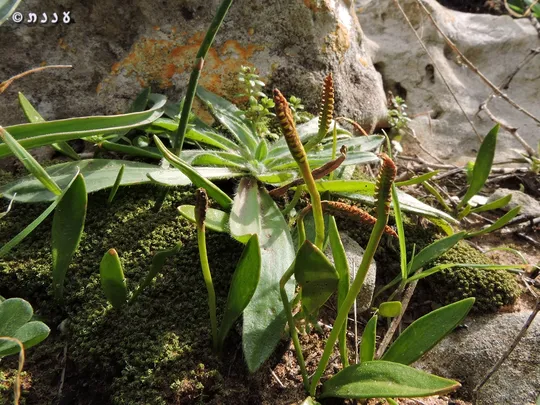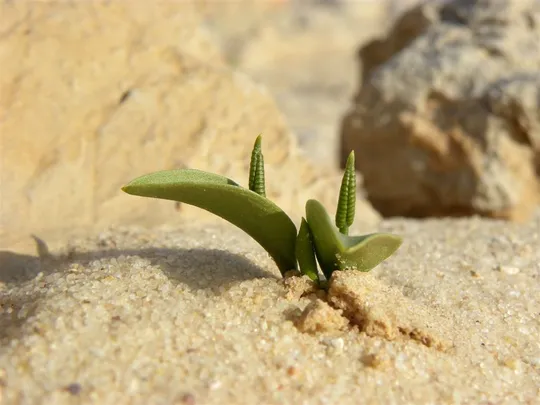Lesser Adder's Tongue, Portuguese Adder's Tongue
Ophioglossum lusitanicum




Ophioglossum lusitanicum is found in three regions
on Israel's coastal plain in a very fragmented pattern, in seven verified
sites. There are however, an estimated ten sites in the country. In the Acre Valley,
the plant is found only in the Liman Nature Reserve. On the Carmel Coast – at Neve
Yam and in Ma'agan Mikha'el. In the
Sharon – in Karkur, in the Hadera quarries, in the Bney Tsion Reserve, near
Harutsim and in the Udim Reserve (Poleg). In the past O. lusitanicum also grew in a eucalyptus grove in Hadera (Yaakov Galil), but this
population is extinct, as it is in the Glilot Junction
Calcareous
sandstone, sandy hamra soil and packed hamra mixed with calcareous sandstone
conglomerate.
For the order
and family – see O.
polyphyllum
•
Ophioglossum
lusitanicum is regularly found in the same three coastal plain regions
over the years, but the number of sites has decreased and some populations are
now extinct – e.g. the Hadera eucalyptus grove and the calcareous sandstone
ridges near the Glilot Junction.
•
O. lusitanicum
grows in most sites in small patches with hundreds of plants. Sometimes
individual plants are also found. However, there is insufficient information
about the long-term dynamics of the populations.
•
The O. lusitanicum
populations in nature reserves are protected, but there is no certainty regarding
the impact of wildfires or of sites becoming covered by perennial vegetation.
•
O. lusitanicum
protected in the Liman, Udim (Poleg) and Bney Tsion reserves. It is protected
by law by virtue of being a fern.
•
O. lusitanicum has an
extensive geographical distribution and is not globally endangered.
Plots for studying Ophioglossum lusitanicum should be established in the reserves in which it is found. O.
lusitanicum patches should be monitored and in situ management
policy should be subsequently determined.
Ophioglossum
lusitanicum
grows in the northern Mediterranean countries, but is absent from the
Mediterranean coast of Africa. It is also found on the Atlantic coasts of Spain,
Portugal and France.
Ophioglossum lusitanicum is a small perennial fern that grows at a
few sites in the northern regions of the coastal plain. It has disappeared from
several sites due to construction and other human disturbances. O. lusitanicum grows in northern and
western Mediterranean countries. It should be preserved, as it is a peripheral
species at the western limit of its global range in Israel.
כהן, ע. ושמידע, א. 1989. צמחים נדירים בארץ/לשון אפעה מצרית. טבע וארץ ל"א/4: 15-17.
Current Occupancy Map
| 1000 squre meter pixel | 5000 squre meter pixel | 10000 squre meter pixel | |
|---|---|---|---|
| number of observations | 0 | 0 | 0 |
| in total pixels | 0 | 0 | 0 |
| Family | Ophioglossaceae |
| Classification | On the endangered species list |
| Ecosystem | Coastal area |
| Chorotype | Mediterranean – Euro –Siberian, Tropical Africa |
| Conservation Site | Liman Nature Reserve , Bne Tsion Reserve |
| Rarity |
1
3
6
|
|---|---|
| Vulnerability |
0
4
4
|
| Attractiveness |
0
0
4
|
| Endemism |
0
0
4
|
| Red number |
1
4.2
10
|
| Peripherality | W |
| IUCN category | DD EW EX LC CR EN VU NT |
| Threat Definition according to the red book | Endangered |
 Based on:
Based on:






